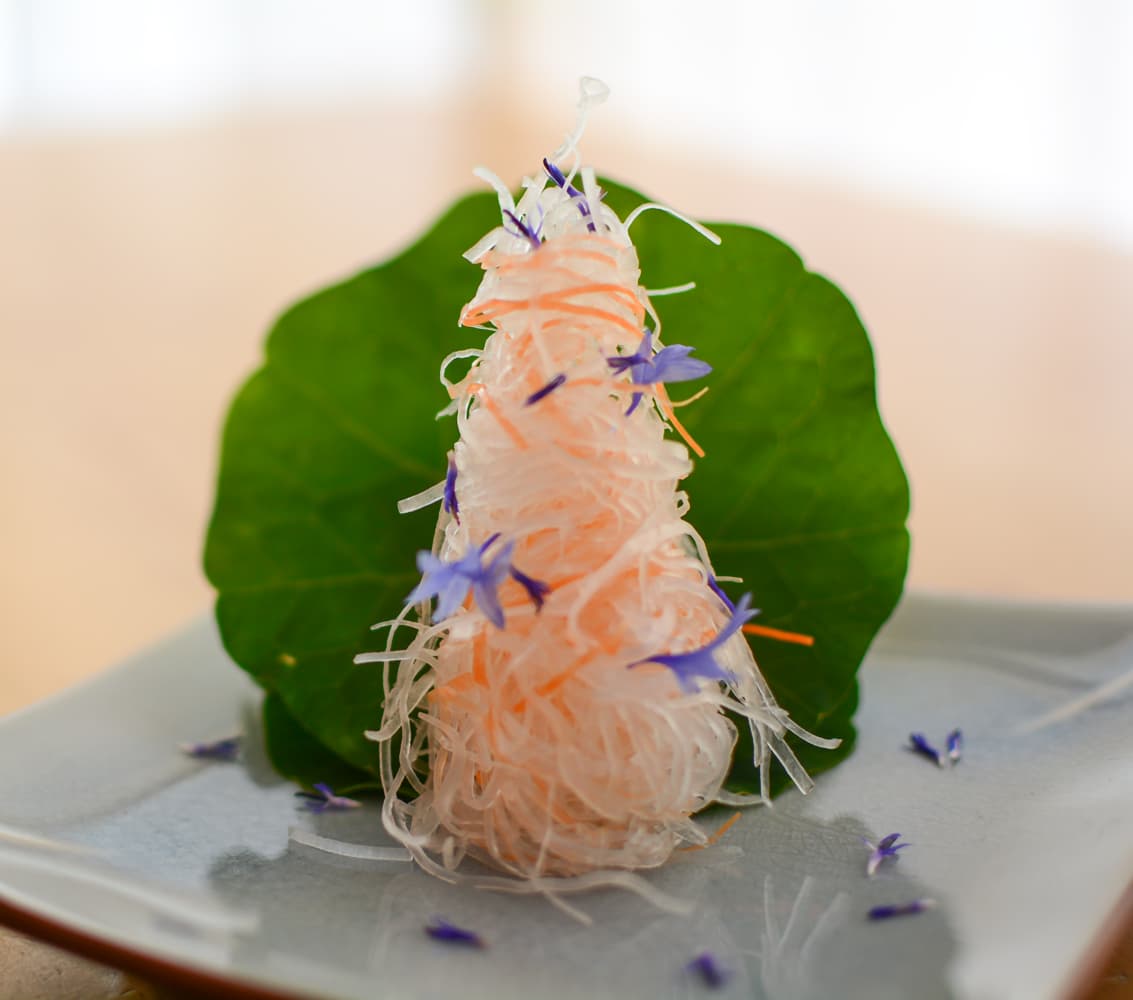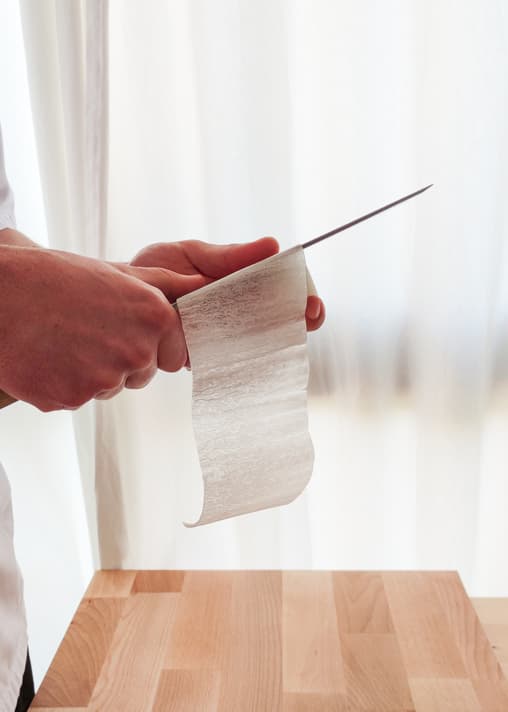What is
Tsuma?
That’s actually a generic term that can be applied to any of the many edible garnishes used to embellish presentations of sashimi. Common examples are artfully carved carrot strips, chrysanthemum flowers, seaweeds, and finely sliced buds of the ginger plant. Yet the piles of white radish are so ubiquitous that, for most people, “tsuma” is pretty much synonymous with daikon.
Why we chose 'Tsuma’?
Our approach to 'tsuma’ is very personal. The style of trimming daikon radish (tsuma) is called katsuramuki. Learning and immersing yourself in this technique requires many months or even years of work / training. It is a very technical activity. To be perfect you have to do it every day.
That is why we’ve chosen the name 'Tsuma’. It means for us:
✓hard work,
✓character,
✓determination.
In conclusion, these 3 attributes combined with regular training and the beauty of Japanese maple (which is the main attribute in our logo) create the pure essence of Japan.


KATSURA-
MUKI
All cutting is done with one underlying idea. To use a shape that capitalizes on the nature of the vegetable while enhancing the flavour.
Cut or sliced vegetables are all related to a few fundamental geometric forms. Peeling a giant white radish (daikon) into a single, continuous sheet is very good practice. It is very useful for controlling the knife. In fact, at the Tsuji school (Japan’s top cooking school) aptitude for the kitchen is judged by how well entering students can perform this task.




